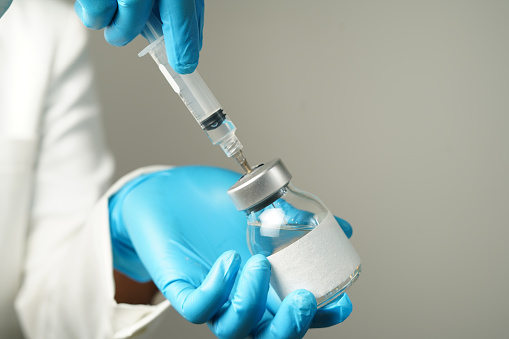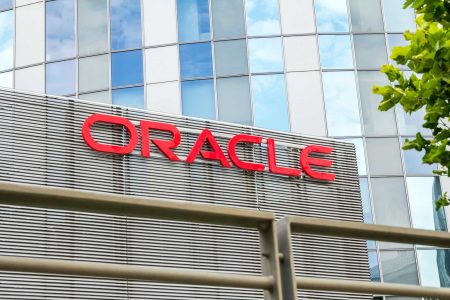Ultragenyx Pharmaceutical Inc. (NASDAQ:RARE) is a good long-term biotech to own in my opinion. That’s because it has already been able to receive regulatory approvals for several of its drugs in its pipeline. Matter of fact, the drugs being sold by the company are Crysvita and Dojolvi.
In Q1 of 2024, it generated $109 million in total revenue, which was an 8% growth year-over-year. As such, if sales continue like this, it will continue to build shareholder value. If this is the case, then why do I believe it is important to take a look at this biotech now? It is quite simply because it is approaching huge inflection points within a 1-year period. The first major program to consider would be regarding the development of DTX401 for the treatment of patients with glycogen storage disease type Ia [GSDIa], which was explored in the phase 3 GlucoGene study.
Not only will further result from this reported phase 3 study be presented at an upcoming medical conference, but the goal is to speak with regulatory authorities in hopes of being able to file for regulatory approval of DTX401 for the treatment of this patient population in 2025.
This isn’t the only program to drive the stock price higher, either. Another promising program would be the advancement of setrusumab for the treatment of pediatric and young adults of osteogenesis imperfecta [OI] subtypes I, III and IV.
There are two ongoing studies here regarding this program. The first one is the pivotal phase 2/3 Orbit study and then the other one is the phase 3 Cosmic study. The key study for investors to look out for would be the phase 2/3 Orbit study, and that is because there will be two interim analyses possible from it by either at the end of 2024 or early 2025. With a few approved drugs under its belt, plus an ability to expand to other rare disorder indications, I believe that investors could benefit with potential gains.
Setrusumab For The Treatment Of Patients With Osteogenesis Imperfecta
One of the programs to go over for Ultragenyx Pharmaceutical would be the development of setrusumab for the treatment of patients with osteogenesis imperfecta. The use of this fully human monoclonal antibody drug is being advanced in two studies, as I noted briefly above. Before going over these studies and possible catalysts, it if first important to understand what this rare disorder is and what the possible market opportunity could be for it. Osteogenesis imperfecta is a type of inherited genetic bone disorder that typically starts up at birth. Due to this disorder, bones are weak and can fracture easily, which is why it also takes up the name brittle bone disease. Another problem that can arise for these patients is that their bones don’t develop properly either.
From what I have been able to find, there are multiple types of disease, which are Type I through Type XIX. However, regarding what Ultragenyx and its partner Mereo BioPharma Group plc (MREO) are targeting, they are Type I, III and/or IV. It is expected that the global Osteogenesis imperfecta treatment market could reach $850.5 million by 2030. Why is Ultragenyx and is partner advancing this drug to treat these patients with Osteogenesis imperfecta? Well, that’s because setrusumab is a monoclonal antibody that inhibits sclerostin. Sclerostin is a key bone signaling pathway that inhibits the formation of bones. By taking out this signaling pathway, in turn, it could allow for normal bone formation to take place.
Ultragenyx was able to test the use of setrusumab for the treatment of these patients with Osteogenesis Imperfecta [OI] in a phase 2 study. In essence, this was interim data from the phase 2 portion of the phase 2/3 Orbit trial, which investigated this drug for the treatment of this patient population. The interim data released from this trial was very positive. Matter of fact, such clinical results were presented as a late-breaker presentation at the American Society for Bone and Mineral Research 2023 Annual Meeting [ASBMR]. With a cut-off date of at least 6-months of treatment with sertusumab, it was shown that the annualized fracture rate with the 24 patients enrolled into this phase 2 portion of the study, was reduced by 67%. Why is this an important finding? With sclerostin in place, bone formation is not as adequate and results in fractures when kids or young adults do daily activities, resulting in fractures. Thus, this huge reduction in fractures is good.
Not only that, but consider that another finding was that patients who took this drug from Ultragenyx and Mereo BioPharma Group Plc were able to reduce average annualized fracture rate to 0.00. Compared to the 2 years before treatment period where such IO patients had a median annualized fracture rate of 0.72.
This program should be watched closely because there are several catalysts for investors to keep an eye on in the coming year. The first catalyst of which is that additional data from the phase 2 portion of the phase 2/3 Orbit study will be released in the 2nd half of 2024. This means that additional results will show if sertusumab is capable of treating patients with IO. In terms of the late-stage portion of the trial, phase 3 portion of the Orbit study, enrollment for it was just completed.
This phase 3 trial portion is unique, and the reason why I say that is because it is possible that there could be several inflection points for it. Consider that the initial goal is to have two interim analyses for this Orbit study by either the end of 2024 or early 2025. The premise will go like this:
- First interim analysis will have a p-value threshold of p ≤ 0.001
- Second interim analysis will occur a few months afterward [If first interim analysis is not met]
- Third data point will occur 18 months after OI patients have been treated with sertusumab
- Reporting of top-line results once patients have been transitioned to open-label extension portion of the study.
One thing to note is that interim analyses data will not be revealed by the data monitoring committee [DMC] unless the results themselves are positive. The premise here is that bisphosphonates increase bone mineral density [BMD], which is a good thing. However, a setback with using them, is that it is not really evident how well they reduce fracture risk for these OI patients. Thus, this is where a drug like sertusumab could be used to help these patients.
DTX401 Program Is Progressing Well For Glycogen Storage Disease With Two key Upcoming Milestones
The next program to go over would be the use of DTX401, which is being developed in the phase 3 GlucoGene study to treat patients with glycogen storage disease type Ia. This is another highly promising program targeting a rare disorder indication with a huge unmet medical need.
Glycogen storage disease type Ia [GSDIa] is a type of disorder that occurs when the body cannot break down a form of stored sugar known as glycogen. This is bad because blood sugar levels are not maintained appropriately. Matter of fact, in between meals, patients reach severely low blood sugar levels [hypoglycemia]. The reason for the body not being able to break down such stored sugar is because of a mutation which occurs in the protein glulcose-6-phosphotase catalytic subunit 1 [G6PC1] or formerly known as G6PC. Low blood sugar leads to some problems, likes tiredness and seizures. Other problems that can occur are enlarged kidneys and enlarged livers. If left untreated, there are other possible symptoms that may come about, such as the following:
- Kidney stones
- delayed puberty
- Osteoporosis
- Gout.
To see if Ultragenyx DTX401 gene therapy could help these patients with GSDIa, it completed a phase 3 trial known as GlucoGene. This study recruited a total of 46 patients who were randomized to receive either treatment with gene therapy DTX401 or placebo over a 48-week period. The primary endpoint of this trial was to evaluate the change from baseline to Week 48 in daily cornstarch intake over this period of time. The final primary endpoint was met with statistical significance in that patients who took DTX401 achieved a statistically significant reduction in daily cornstarch in take at week 48. The difference of drug versus placebo was achieved with a statistically significant p-value of p<0.0001 with maintenance of glucose control.
Believe it or not, but there are three other big catalysts for investors to consider here. The first of which is that full 48-week data from this phase 3 GlucoGene study will be presented at an upcoming scientific conference. The second catalyst would be that Ultragenyx might be in a position to file for FDA approval of DTX401 for the treatment of patients with GSDIa in 2025. Of course, this is pending that the meeting with the FDA goes well beforehand.
Lastly, should everything work in favor of the company, then it can expect to receive U.S. marketing approval of DTX401 for the treatment of this patient population in 2026. The whole premise for this gene therapy is that it uses an adeno-associated virus serotype 8 [AAV8] to deliver stable expression of G6Pase-a with a single intravenous infusion.
Financials
According to the 10-Q SEC Filing, Ultragenyx Pharmaceutical had cash, cash equivalents and marketable debt securities of $568.7 million as of March 31, 2024. The bottom line is that investors should be aware of continuous dilution.
The reason why I state that is because of what it had stated in its 10-Q SEC filing, which is that it believes it only has enough cash to fund its operations for at least the next 12 months. The reason for the cash on hand is because of a financial transaction it had completed last year. This was a public offering of its common stock and warrants, which was done back in October 2023. Total gross proceeds from this offering were $326.5 million. If it does really need to raise cash, there is an option available to it which it could utilize if it deems necessary to do so.
In February 2024, it entered into a Sales Agreement with Cowen and Company, LLC, or “Cowen,” where occasionally Ultragenyx could sell shares of its common stock with an aggregate offering of $350 million. As of March 31, 2024, no sales have been sold under this Cowen ATM Sales Agreement.
One last item to point out is that this company has already been able to receive regulatory approval of a few drugs from its pipeline. These drugs are known as Crysvita for the treatment of patients with X-linked hypophosphatemia [XLH] and Dojolvi for the treatment of patients with Long-Chain Fatty Oxidation Disorder [LC-FAOD]. Total revenues achieved in Q1 of 2024 for both of these products were $109 million, which was an 8% increase from the same time period in 2023. Total cash burn per quarter is $274 million, and the cash runway is 12 months.
Risks To Business
There are several risks that investors should be aware of before investing in Ultragenyx Pharmaceutical. The first risk to consider would be regarding the development of setrusumab for the treatment of patients with Osteogenesis Imperfecta [OI]. The use of this monoclonal antibody is being explored in the ongoing phase 3 Orbit study. There is no assurance that the first interim analysis to be done will reach the expected p-value threshold of p ≤ 0.001. Nor that the second interim analysis or following data to be released achieved the intended positive outcome to move forward with a regulatory filing.
A second risk to consider would be regarding the advancement of gene therapy DTX401 for the treatment of patients with glycogen storage disease type Ia or GSDIa. Full data is expected to be shown from the released phase 3 study and there is no assurance that the market will react to this data appropriately, for starters. In addition, it is the goal of this company to be able to file for regulatory approval of DTX401 for the treatment of this patient population next year. There is no guarantee that a trial of this caliber will be enough to file for such regulatory approval for this gene therapy.
A third risk to consider would be in terms of the development of GTX-102, which is an antisense oligonucleotide [ASO] therapy being used to treat patients with Angelman Syndrome. Positive phase 1/2 results were released using this ASO to treat this patient population back on April 15th of 2024. The goal is to meet with the FDA in mid-2024 to discuss the potential of initiating a phase 3 study for this program, and for such a late-stage study to begin before the end of this year. There is no guarantee that the FDA meeting will go well, nor that it will allow Ultragenyx to initiate a phase 3 study using GTX-102 to treat these patients with Angelman Syndrome.
The fourth and final risk to consider would be in terms of the financial position that it is in. The reason why I state that is because, as I have shown above with its 10-Q SEC Filing, it believes that it only has enough cash on hand to fund its operations for at least the next 12 months. This means that it will likely need to raise cash in the coming months. It could decide to tap into its ATM Sales Agreement with Cowen, which has an aggregate amount of $350 million to be sold, or it could just enact another financial transaction with better terms.
Conclusion
Ultragenyx Pharmaceutical is in good shape because it has already received regulatory approvals for a few of its products from its pipeline. It had generated Crysvita revenue of $83 million and Dojolvi revenue of $16 million. Combined in Q1 of 2024, it posted revenues of $109 million, which was an 8% increase from the same time period in the year prior. I believe that investors might be able to benefit from this name because within a 1-year period, there are several milestones that are expected to be released from its pipeline.
The first of which is the use of setrusumab for the treatment of patients with osteogenesis imperfecta, which is being explored in a few studies. More importantly, it would be a good idea to keep an eye on the interim analysis to be done from the ongoing phase 3 Orbit study. Plus, the additional data coming from the prior phase 2 portion of this very same study in 2024.
Another promising program would be the development of gene therapy DTX-401 for the treatment of patients with Glycogen Storage Disease 1a [GSDIa]. The bottom-line is that patients who were given this form of treatment were able to achieve a statistically significant reduction in daily cornstarch intake at Week 48 with a p-value of p<0.0001 with maintenance of glucose control.
Read the full article here













